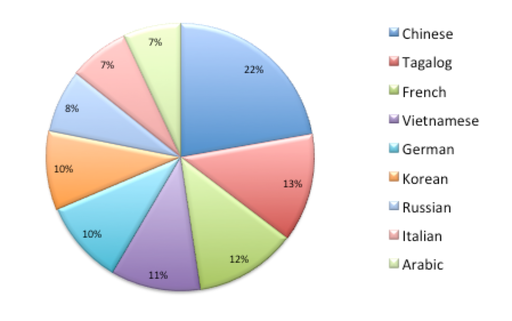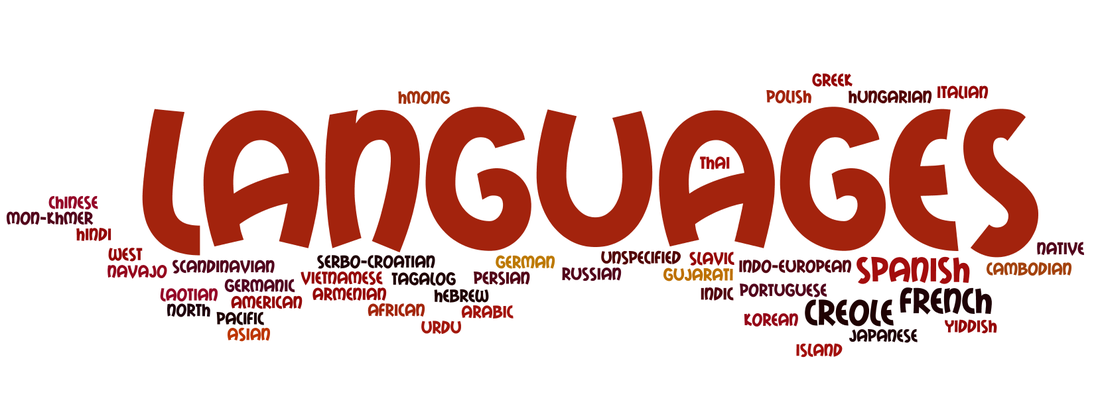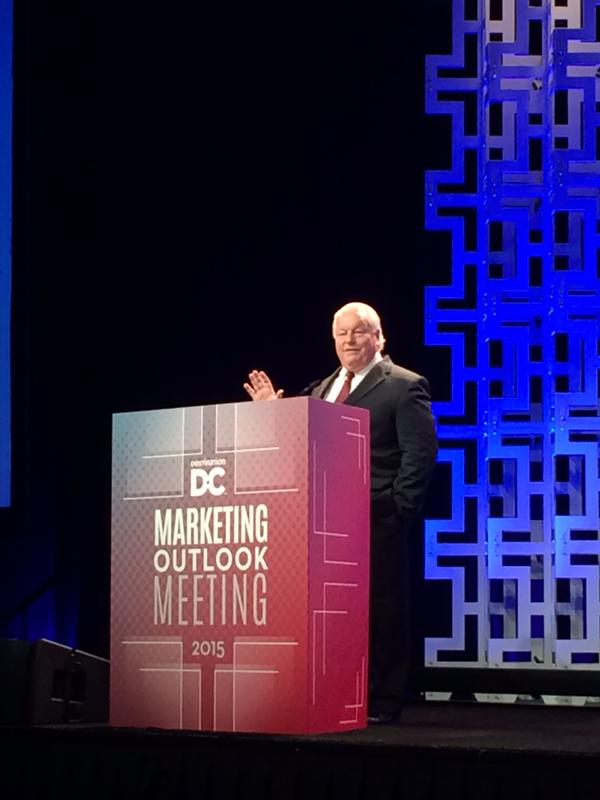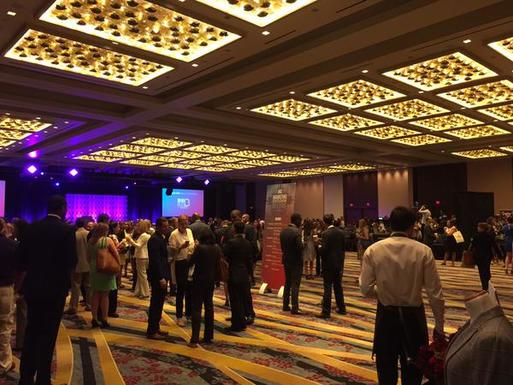|
Considering going global or expanding your global operations?
The U.S. government lists the top 15 countries for exports of goods.1 Canada tops the list, followed by Mexico and China. Current retail numbers show a likely softening of the U.S. market, so you'll want to pull out all the stops next year. This means localizing for niche markets within the U.S., and creating marketing campaigns for each local market outside the U.S. Tailor your message, translate product manuals and packaging, carefully consider color choices for websites and product packaging, and staff up so that you can answer customer questions in multiple languages. The more effort you make to reach out to customers in their own languages, the more likely your sales will take off. You may even need to do some language adjustment for English speaking countries. Some terms that you use might come across properly. For example, did you know that if you tell a group of U.K. business people that you want to table a matter, they'll think that means you want to discuss it right then? Be sure that the words you use mean the same thing overseas. And, as always, avoid translating humor. Either re-write it to suit the local market or leave it out altogether. Start your globalization process by researching potential markets; just 15 countries account for nearly 75% of all U.S. exports. In order, they are:
1. http://www.census.gov/foreign-trade/statistics/highlights/top/top1509yr.html
1 Comment
Most of our large cities have pockets of immigrants where English is rarely heard and local newspapers circulate in foreign languages. Increase your market penetration by advertising in the local language papers; translate your tv ads and your social media posts. And don't limit yourself to the hispanic population, many cities have large groups of Chinese, Tagalog, French, Vietnamese, Russian, and Arabic speakers as well.
Tis the season to send out mass emails to customers and prospects hoping to cash in on the holiday spending spirit. If your business is global, you need to give a little extra thought to your holiday missives. It may be fun to send a Thanksgiving greeting to your U.S. customers, but your European clients won't be celebrating the day and your message will fall flat. Likewise trying to woo your Asian customers with Christmas deals may not be the best strategy, but many overseas cultures do make a big deal out of New Year's. Your best option is to put together a calendar of your major markets and their holidays. What should be on it? China: Singles Day, November 11. A new holiday, begun in 1993, it is now one of China's largest shopping days, far eclipsing sales for U.S. holidays. Alibaba, the online Chinese retailer, pounced on Singles Day, and in 2012 doubled the revenue U.S. companies grossed from Cyber Monday. In 2013, Alibaba racked up $2 billion in sales in the first hour of the day. With that success, it's no wonder that Alibaba is hoping to export the holiday to the U.S. and Europe. China, Vietnam, Korea: Lunar New Year and National Day holidays, late January to February. Because this is a lunar calendar festival the dates move every year within this range. This is one of the largest shopping holidays for these countries. People buy clothing, food, and luxury items to give as gifts. In 2015, Chinese tourists to the U.K. spent an average of $1,100 per person on new year's gifts. In Vietnam, sales increase up to 50% just prior to the new year's celebrations. Keep in mind that many stores close for the holidays themselves, and most of the shopping happens in the days and weeks leading up to the big celebrations. If you are a B2C company, you won't want to miss out on this holiday. India: India's largest shopping holiday is Diwali. Another lunar calendar event, it can fall in October or November. Jewelry and cars are especially popular holiday gifts, as it is believed that buying expensive items can bring good luck. Some malls report a 20% increase in traffic during the holiday, with customers often spending most of a month's salary on gifts. U.K.: While the U.K. does participate in Cyber Monday, their other big shopping day is boxing day, the day after Christmas. In 2014 they spent £2.7 billion that day alone. France: In 2014, January 7th was the highest grossing shopping day of the year, with more than double the average day's sales. France was the only European country to have its best shopping day after the holiday season. Mexico: November 18th, El Buen Fin or the anniversary of Mexico's 1920 revolution is a major shopping extravaganza. A four day event, in 2014 it grossed $14 billion. This list of holidays should get you started on thinking about when your customers will be walking the malls and surfing the net for the best deals. Personalize your email and social media campaigns and tailor them to each market, and you'll have a happier and successful holiday season.  In honor of world statistics day, we thought we'd share some stats that show how important it is for U.S. businesses to translate their marketing and product materials and hire interpreters for events for domestic audiences. 55 million people in the U.S. speak a language other than English at home, close to 20% of the population. 62% of those 55 million people speak Spanish or Spanish Creole. Of the remaining 21.9 million people, 20%, or roughly 11 million of them speak 9 different languages. The balance of people, 10 million, speak 28 different languages (or derivatives of those languages.)
So the next time you tweet out to your followers or upload a video, think twice about just releasing it in English. There are a whole lot of people out there who may want what you're offering, if only you'd advertise it in their language. Source: 2006-2008 American Community Survey. What is Omni-channel localization?
It's localizing every step of the customer experience, from initial contact through post-purchase engagement. Every interaction with your customer should reflect your brand and your values, but also be readily understood and appealing in local markets. And while you may need to adjust your language, your tone, and your advertising channels from market to market, within each market you need to have consistency from first touchpoint to last. Start by charting the customer engagement process step-by-step for each market and then do your research. For every step, you need to discover how best to interact with the customers in that market. Customers in Germany engage with companies differently than those in Japan, so discover for each local market which mix of channels your customers prefer, whether it be phone surfing, word-of mouth, social media, etc. What tone do they expect when they receive email communications and how much are they willing to read? How much hand-holding do customers need in each market? Do they want to visit a physical store first to play with the product or are they willing to order directly online? Don't forget to think about live touch points as well. Call centers should be adequately staffed with people who speak the local language, phone prompts need to be localized, website chat options need native speakers, and social media channels should be chosen for their importance to that community and staffed, again, with native speakers. Every time your customer reaches out to you or you reach out to her, the experience should be consistent and personalized, from the basics, like only showing products on the localized websites that are actually offered in that market, to ensuring that the translated language has consistent terminology, to true two-way engagement that demonstrates that you understand your customer as well or better than your local competitors. RABI partners and our local D.C. team were pleased to attend the Destination D.C. marketing outlook 2015 event. Destination D.C. hosted more than 500 tourism, trade, and local business members for a look at how the tourism and convention business is set to grow in D. C. over the next few years. We met Destination D.C.'s President and CEO, Elliott Ferguson, who stopped by our table at the event. Great speakers and sessions made the event fun and informative. Some of the fascinating facts that we learned include:
The takeaway from the event? Huge growth in international tourism, especially millennials, represents a major opportunity for savvy companies. Successful businesses should provide support at their events for participants for whom English is not their first language, and they should also localize their marketing materials and social media posts to reach potential visitors in their languages via the marketing media that their audience consumes most. We can help you provide the best experience and outreach to your market. RABI offers a premier events solution to help plan and organize global events and international conferences and ensure seamless communication through advanced services and technologies. Services we offer include:
Visit redblueint.com/events.html for more information about our events solution and to download our case study, Simultaneous Interpretation: a Commercial Property Company.
Research shows that using pictures or videos in your social media posts, on your website, and in your emails dramatically increases your click throughs. In fact, Forrester reports that videos in emails increase click-throughs by an astounding 200-300%!
In order to get the most from your videos, localize them for all your major markets. Rather than relying on YouTube's built in subtitle service, apply a little advance planning and can create videos that captivate your audience all over the world. For truly professional looking and sounding videos, hire a localization agency that will create a frame-by-frame transcript of your video. This will ensure that the voice-over starts and ends with the video, with no awkward gaps or overruns. The agency should also have a roster of professional translators that will adapt your transcript so that it reads as if it were written in the local language, with the right terminology, local slang, etc. You should also ensure that you hire voice-over talents that are native speakers in the languages you want to localize into. Your videos need to sound like they were created by native speakers or you will lose credibility in the marketplace. Finally, when it comes time to record the videos, be sure to have a monitor in the recording studio with you. The monitor should be a native speaker and able to tell if the voice-over talent inadvertently makes a mistake, allowing you to correct it in the moment. This will save you time and money, because you won't need to schedule another session for re-takes. By hiring the proper professional talent, and taking the time to pace your transcript and adapt it to fit the local customs and marketplace, you'll create a video that will look and sound like it was created locally, and you will dramatically increase your international audience engagement. For more specifics on how to achieve great video-voice overs, read our multilingual corporate video case study. In a recent article in Brand Quarterly, Dr. Nitish Singh discusses how companies have historically centralized their marketing functions, standardized their identity across markets, concentrated on a few brands, and limited their packaging sizes and styles. However, as Dr. Singh explains, these companies should be moving away from standardization and toward localization. If they don’t, they risk missing many great opportunities and could even be offending or alienating potential customers.
In addition to relaying stories about the trouble companies get into when trying to directly translate their name into other languages, Dr. Singh discusses other aspects of localization and how critical it is to understand regional markets and adapt to them. An interesting point that Dr. Singh makes is that pricing affects perception in the marketplace. He points out that a low-end U.S. brand may actually be a mid-range brand in another country. If you use the same marketing strategy, it’s unlikely to work, given that your consumer perceives a different level of quality. Think about the difference in an ad campaign between a budget furniture brand and a high-end brand. You would probably be confused if the high-end brand used the bright colors, graphics, and jingles that we expect from the budget-priced product. To be successful, you need to adapt your copy and perhaps your look and feel so that your marketing efforts reflect your product placement. The article also discusses how standardizing your product packaging may limit your sales. In the U.S., consumers often want to buy products in bulk, but in places like India, customers frequently want to buy in very small packages. How can you manufacture and ship smaller packaging, but still price it so that you make a profit? Again, how does it affect your in-country marketing strategy? You need to plan for less room on the packaging itself, consider how to display smaller packages on shelves, and decide which product attributes should be called out on the packaging to appeal to that region's shopper. Don't forget to think about packaging color too. What looks attractive in one country may not appeal in another. Social media and purchasing methods also vary greatly from country to country. In some countries, more than 50% of purchases are made from mobile devices. In Japan, customers may make the purchase online, but expect to pick up the product in person. You should familiarize yourself with the popular purchase and delivery options for each region, but also think about any disruptive technologies that may put you ahead. If you're used to selling your product online, how can you push mobile purchasing in a market that hasn't yet adopted that method? What incentives will work for those consumers? Note that if you pursue an online strategy you will need to create a site in that region's language. You cannot expect consumers in other countries to purchase from an English language site. In the case of a market like Japan, is there a local delivery company whose services you can engage so that your customer no longer has to go to the store to pick up your product? Consumers are likely to choose your product over your competitors if you make the purchase easier for them. Companies that research marketing, packaging, and distribution for each regional market can gain a great advantage by creating manufacturing efficiencies where practical, but also tailoring product and consumer marketing where it will lead to greater sales. Don’t just translate the words on your packaging and websites, but adapt the content to appeal to the consumers in each local market. Learn from your successes from the U.S. market, but combine them with what consumers expect from their local shopping experiences and you're more likely to beat out your competition. As we recently Tweeted, U.S. metropolitan area exports were up $36 billion dollars in 2014, reaching $1.14 trillion. Houston led the way with exports of $119 billion. The next four largest exporting cities were New York, LA, Seattle, and Detroit.(1) But what does this mean for you?
We think it shows that despite the strong dollar, U.S. goods are in high demand, and if you're not looking for opportunities to diversify globally, then you're missing out on potential revenue streams. If you're just getting started, you may want to download the commerce department's export guide. The book strives to answer any questions you may have about exporting. Also just released at trade.gov, are the 2015 Top Market reports. These reports provide an assessment of future industry-specific export opportunities and an examination of the competitive landscape. Available free for 19 different industries, the reports include sector snapshots and detailed information for specific countries. Once you've figured out where your industry is heading and what countries are your best bets, be sure to take the time to create a detailed marketing plan for how to enter foreign markets. Pay close attention to what each market's consumers want and talk up those features. Each market you examine may get excited about different aspects of your product, so it's good to do your homework. You may also want to tweak your offerings. For example, in some markets red is a lucky, and highly desired color, but in other markets it may not be popular at all. Just by doing even a little consumer preferences research, you'll increase your chance of success. Remember, it's better to make a good impression from the start, as it can be much harder and more costly to repair a reputation than to build it from scratch. And finally, don't forget that part of your marketing plan needs to include localization of your marketing materials: videos, website, sales sheets, case studies, and your social media presence. Your overseas prospects are far more likely to buy from you if you market to them in their own language. 1. http://www.trade.gov/mas/ian/build/groups/public/@tg_ian/documents/webcontent/tg_ian_003620.pdf Conferences draw more and more of their audiences from overseas, and the number of meetings that rotate among at least three countries is up as well. Add in that in March, The Center for Exhibition Industry Research reported the 18th straight quarter of growth for the industry, and you’ll see that in spite of access to conference calls, Skype, and social media, we all really value the chance to meet others in-person and create the deeper connections such opportunities provide. With that in mind, we have a few tips for how to attract international attendees and make sure they go home raving about your conference.
1. Identify your attendees and target them in their language. This seems obvious, but many people don’t think through this carefully enough. In addition to buyers, are you targeting suppliers, partners, or trade groups? Next, market to those groups in their own languages with the content adjusted to reflect what they value and want to learn about. You will come across with much more credibility, plus it will reassure them that your conference really is set-up for international attendees. Bonus tip: check the holiday calendars of your international markets to avoid scheduling your conference when your target attendees are unavailable. 2. Hire an event manager. This is especially important if the conference you’re planning is outside your own country. Event Managers know the local venues and suppliers and can make sure that you get exactly what you need for your conference. If the site you pick is overseas, it may be difficult or too expensive for you to visit more than once before your conference, so an event manager is an essential go-between. Additionally, if there are language barriers, an event manager can help you negotiate contracts and make sure the little details are properly discussed. Your event manager should be local and speak the local language, which means you may find you need to hire an interpreter to work with you and your event manager to be sure you fully understand each other, but in the long run you will save money and reduce your stress level. 3. Offer translation and interpretation services. Although your international attendees are highly likely to speak English, it is not their first language and they may find it difficult to understand all of your speakers and to follow along in fast paced discussions. Think about how hard it can be for you to understand people with heavy accents, even the difference between U.S. English and Irish English can be difficult. Hire interpreters for all your sessions from keynote to breakout in the major languages that are in attendance. If you have interpreters, your Q&A sessions and discussions will be livelier and more inclusive. Depending on your budget, you may also want to offer to translate key handouts, especially for your high profile speakers. And you should consider having signage in multiple languages if you anticipate a large number of international attendees. Finally, if you plan to communicate conference information through a mobile app or Twitter, you should hire a translator to make your communications available in all the major languages spoken at the conference. This will ensure that all of your attendees are in the loop. 4. Consider cultural differences. Think about how the customs of your international attendees may be different from your own. For example, in many cultures, people drink hot chocolate in the morning or during coffee breaks. In China, food is usually served during coffee breaks. It’s relatively easy and low cost to have muffins or fruit available, and if it makes your attendees happier, why not accommodate them? For dinners, you should offer vegetarian alternatives, and talk to your caterer to get his advice about the dietary customs of other cultures. Be prepared for your international attendees to be extremely punctual or perhaps more than fashionably late, based on their own cultural norms. German attendees are likely to be right on time and expect you to be on time too. Japanese are likely to arrive early, while Brazilians may arrive late. If you expect a large contingent from one culture, you should find out ahead of time what to expect and manage speaker expectations accordingly. Getting attendees from other countries to attend your conference will raise your institution’s profile, improve conference networking opportunities, and create exciting business opportunities for your entire audience. By following these four tips, you will ensure that your international audience will return home planning to attend the following year, and even better, they'll spread the word. |
Author
Archives
March 2024
Categories
All
|
Photos from : : Ys [waiz] : :, bjahind, fabola, MattysFlicks, @sage_solar, LoS, Traducción e Interpretación, Kyle Taylor, Dream It. Do It., _gee_, keepitsurreal, One Way Stock, Airviewsphotos, GotCredit, efile989, Benoit cars, ** RCB **, stephiesal853, Francisco Anzola, Highways England, ITU Pictures, VIPevent, leoplus, Karsten Bitter, Jolante, jobstop11, Nguyen Vu Hung (vuhung), jurvetson, mikefats, YooSan, sandrafdzh, roland, mikecogh, y entonces, Donald Lee Pardue, Gatorgoon, daniel0685, BÜNDNIS 90/DIE GRÜNEN, rick, {Guerrilla Futures | Jason Tester}, mikecogh, markyharky, amslerPIX, jo.sau, IAEA Imagebank, lisa-skorpion, Toronto Public Library Special Collections, Wootang01















 RSS Feed
RSS Feed
